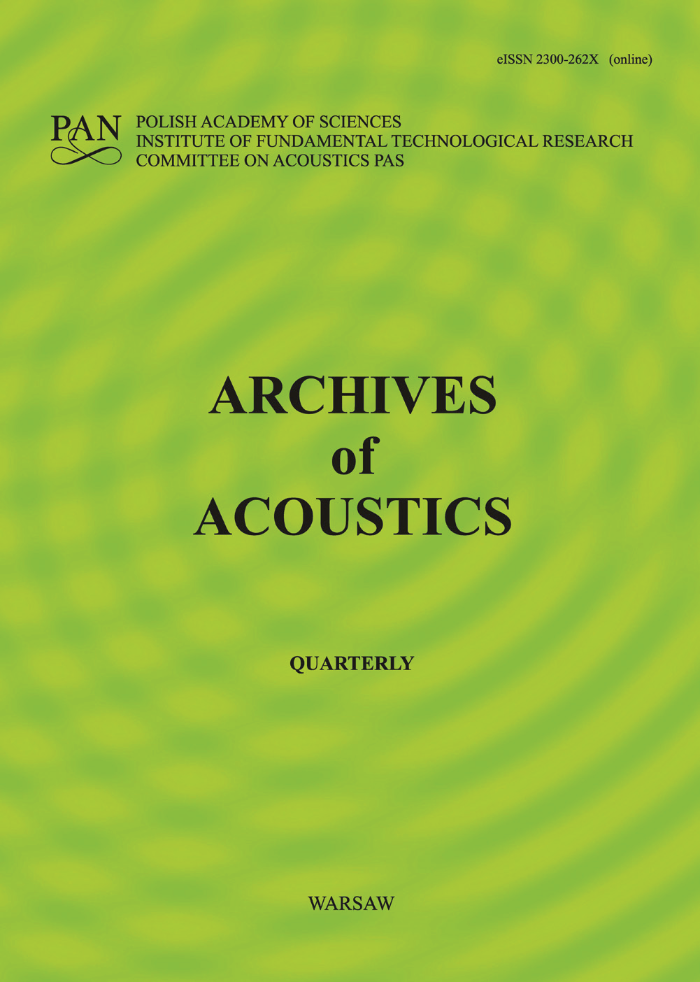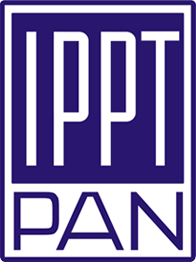Abstract
When evaluating speech intelligibility (SI) in automotive cabins, binaural measurements typically employ a fixed dummy head. However, the impact of listener head positions on SI in nonuniform cabin sound fields remains unclear. This study analyzed SI under various listener head positions in an automotive cabin. An artificial mouth was regarded as the speaker, which was placed in three passenger positions. Binaural room impulse responses were measured using a dummy head in the driver’s seat with various head positions. The results show that head position significantly affects SI, with variations of up to 7 dB in octave band magnitudes, more than one just-noticeable difference in the speech transmission index, and shifts of up to 2.5 dB in the speech-reception threshold. SI variability depends on the speaker’s location. Directivity patterns play a crucial role in the front-passenger position, while seat occlusion affects SI at the back-right position, causing substantial decreases below a certain height threshold. At the back-left position, head positions close to the headrest enhance SI due to distance and reflections. Minor head displacements (4 cm apart) generally have insignificant effects on SI, except near seat obstructions or reach critical thresholds.
Keywords:
automotive cabin, speech intelligibility, head position, speech reception threshold, speech transmission indexReferences
- Arweiler I., Buchholz J.M. (2011), The influence of spectral characteristics of early reflections on speech intelligibility, The Journal of the Acoustical Society of America, 130(2): 996–1005, https://doi.org/10.1121/1.3609258.
- Bilzi P., Bozzoli F., Farina A. (2005), Influence of artificial mouth’s directivity in determining speech transmission index, Journal of the Audio Engineering Society, http://www.aes.org/e-lib/browse.cfm?elib=13345.
- Biswas R., Nathwani K., Hafiz F., Swain A. (2022), Optimal speech intelligibility improvement for varying car noise characteristics, Journal of Signal Processing Systems, 94: 1429–1446, https://doi.org/10.1007/s11265-022-01815-x.
- Bradley J.S., Reich R., Norcross S.G. (1999), A just noticeable difference in C50 for speech, Applied Acoustics, 58(2): 99–108, https://doi.org/10.1016/S0003-682X(98)00075-9.
- Bradley J.S., Sato H., Picard M. (2003), On the importance of early reflections for speech in rooms, The Journal of the Acoustical Society of America, 113(6): 3233–3244, https://doi.org/10.1121/1.1570439.
- Brand T., Kollmeier B. (2002), Efficient adaptive procedures for threshold and concurrent slope estimates for psychophysics and speech intelligibility tests, The Journal of the Acoustical Society of America, 111(6): 2801–2810, https://doi.org/10.1121/1.1479152.
- Cao Y. et al. (2022), The influence of seat occlusion on driver’s binaural signal in automobile based on FEMRTM simulation, Journal of Physics: Conference Series, 2185(1): 012025, https://doi.org/10.1088/1742-6596/2185/1/012025.
- Dal Degan N., Prati C. (1988), Acoustic noise analysis and speech enhancement techniques for mobile radio applications, Signal Processing, 15(1): 43–56, https://doi.org/10.1016/0165-1684(88)90027-8.
- Ebbitt G.L., Remtema T.M. (2015), Automotive speech intelligibility measurements, SAE International Journal of Passenger Cars – Mechanical Systems, 8(3): 1120–1127, https://doi.org/10.4271/2015-01-2337.
- Ferrari C., Cheer J., Mautone M. (2023), Investigation of an engine order noise cancellation system in a super sports car, Acta Acustica, 7: 1–9, https://doi.org/10.1051/aacus/2022060.
- GB/T 7347-1987 (1987), The standard spectrum of Chinese speech, National Standard of China.
- Gerrera G.C., Donoso-Garcia P.F., Medeiros E.B. (2016), Intelligibility in low-cost automotive audio systems, Journal of the Audio Engineering Society, 64(5): 320–331, http://www.aes.org/e-lib/browse.cfm?elib=18137.
- Ghanati G., Azadi S. (2020), Decentralized robust control of a vehicle’s interior sound field, Journal of Vibration and Control, 26(19–20): 1815–1823, https://doi.org/10.1177/1077546320907760.
- Granier E. et al. (1996), Experimental auralization of car audio installations, Journal of the Audio Engineering Society, 44(10): 835–849, http://www.aes.org/e-lib/browse.cfm?elib=7882.
- Houtgast T., Steeneken H.J.M., Plomp R. (1980), Predicting speech intelligibility in rooms from the modulation transfer function. I. General room acoustics, Acustica, 46(1): 60–72.
- Hu H., Xi X., Wong L.L.N., Hochmuth S., Warzybok A., Kollmeier B. (2018), Construction and evaluation of the Mandarin Chinese matrix (CMNmatrix) sentence test for the assessment of speech recognition in noise, International Journal of Audiology, 57(11): 838–850, https://doi.org/10.1080/14992027.2018.1483083.
- Huang W., Peng J., Xie T. (2023), Study on Chinese speech intelligibility under different low-frequency characteristics of reverberation time using a hybrid method, Archives of Acoustics, 48(2): 151–157, https://doi.org/10.24425/aoa.2023.145229.
- International Electrotechnical Commission (2011), Sound system equipment – Part 16: Objective rating of speech intelligibility by speech transmission index (IEC Standard No. 60268-16:2011), https://webstore.iec.ch/en/publication/1214.
- Kleiner M., Tichy J. (2014), Acoustics of Small Rooms, CRC Applied Mathematics Research Press, Boca Raton, FL.
- Liang L., Yu G. (2020), Binaural speech transmission index with spatialized virtual speaker in near field: Distance and direction dependence, The Journal of the Acoustical Society of America, 148(2): EL202–EL207, https://doi.org/10.1121/10.0001808.
- Liang L., Yu G. (2023a), The combined effect of source directivity and binaural listening on near-field binaural speech transmission index evaluation, Applied Acoustics, 203: 109198, https://doi.org/10.1016/j.apacoust.2022.109198.
- Liang L., Yu G. (2023b), Effect of speaker orientation on speech intelligibility in an automotive environment, Applied Acoustics, 205: 109269, https://doi.org/10.1016/j.apacoust.2023.109269.
- Liang L., Yu G., Zhou H., Meng Q. (2022), Effect of listener head orientation on speech reception threshold in an automotive environment, Applied Acoustics, 193: 108782, https://doi.org/10.1016/j.apacoust.2022.108782.
- Liang L., Yu L., Zhao T., Meng Q., Yu G. (2021), Speech intelligibility for various head orientations of a listener in an automobile using the speech transmission index, The Journal of the Acoustical Society of America, 149(4): 2686–2697, https://doi.org/10.1121/10.0004265.
- Meissner M. (2017), Acoustics of small rectangular rooms: Analytical and numerical determination of reverberation parameters, Applied Acoustics, 120: 111–119, https://doi.org/10.1016/j.apacoust.2017.01.020.
- Miqueau V., Parizet E., Germes S. (2024), Influence of glazing on sound quality in the car: Validation of auralizations obtained from SEA calculations, Acoustics Australia, 52: 145–159, https://doi.org/10.1007/s40857-024-00315-1.
- Parizet E. (1992), The influence of speech importance function upon articulation index computation in cars, Noise Control Engineering Journal, 38(2): 73–79, https://www.ingentaconnect.com/content/ince/ncej/1992/00000038/00000002/art00003?crawler=true.
- Parizet E. (1993), Speech intelligibility mappings in a car compartment, International Journal of Vehicle Design (IJVD), 14(2/3): 132–144, https://doi.org/10.1504/IJVD.1993.061830.
- Rife D.D. (1992), Modulation transfer function measurement with maximum length sequences, Journal of the Audio Engineering Society, 40(10): 779–790, http://www.aes.org/e-lib/browse.cfm?elib=7032.
- Rumsey F. (2016), Automotive audio: They know where you sit, Journal of the Audio Engineering Society, 64(9): 705–708, http://www.aes.org/e-lib/browse.cfm?elib=18378.
- Samardzic N. (2014), The applicability of the objective speech intelligibility metrics for vehicle interior speech intelligibility evaluation, considering different listening configurations and background noise spectra, SAE International Journal of Passenger Cars – Mechanical Systems, 7(1): 434–438, https://doi.org/10.4271/2014-01-9126.
- Samardzic N., Novak C. (2011a), In-vehicle speech intelligibility for different driving conditions using the speech transmission index, Noise Control Engineering Journal, 59(4): 397–407, https://doi.org/10.3397/1.3598380.
- Samardzic N., Novak C. (2011b), In-vehicle application of common speech intelligibility metrics, International Journal of Vehicle Noise and Vibration (IJVNV), 7(4): 328–346, https://doi.org/10.1504/IJVNV.2011.043193.
- Samardzic N., Moore B.C.J. (2021), Binaural speech-to-noise loudness ratio at the speech reception threshold in vehicles, Noise Control Engineering Journal, 69(2): 173–179, https://doi.org/10.3397/1/376917.
- Schroeder M.R. (1981), Modulation transfer functions: Definition and measurement, Acta Acustica united with Acustica, 49(3): 179–182.
- van Wijngaarden S.J., Drullman R. (2008), Binaural intelligibility prediction based on the speech transmission index, The Journal of the Acoustical Society of America, 123(6): 4514–4523, https://doi.org/10.1121/1.2905245.
- Visintainer A.P., VanBuskirk J.A. (1997), Effects of sound absorption on speech intelligibility in an automotive environment, SAE, Technical Paper 971881, https://doi.org/10.4271/971881.
- Wang D.F., Tan G.P., Chen S.M., Jiang J.G., Su L.L. (2012), Research on speech intelligibility of sound field inside passenger car, Advanced Materials Research, 403–408: 5214–5219, https://doi.org/10.4028/www.scientific.net/AMR.403-408.5214.
- Wang Y., Yu G. (2025), Typicality analysis on statistical shape model-based average head and its head-related transfer functions, The Journal of the Acoustical Society of America, 157(1): 57–69, https://doi.org/10.1121/10.0034746.
- Warzybok A., Rennies J., Brand T., Doclo S., Kollmeier B. (2013), Effects of spatial and temporal integration of a single early reflection on speech intelligibility, The Journal of the Acoustical Society of America, 133(1): 269–282, https://doi.org/10.1121/1.4768880.







